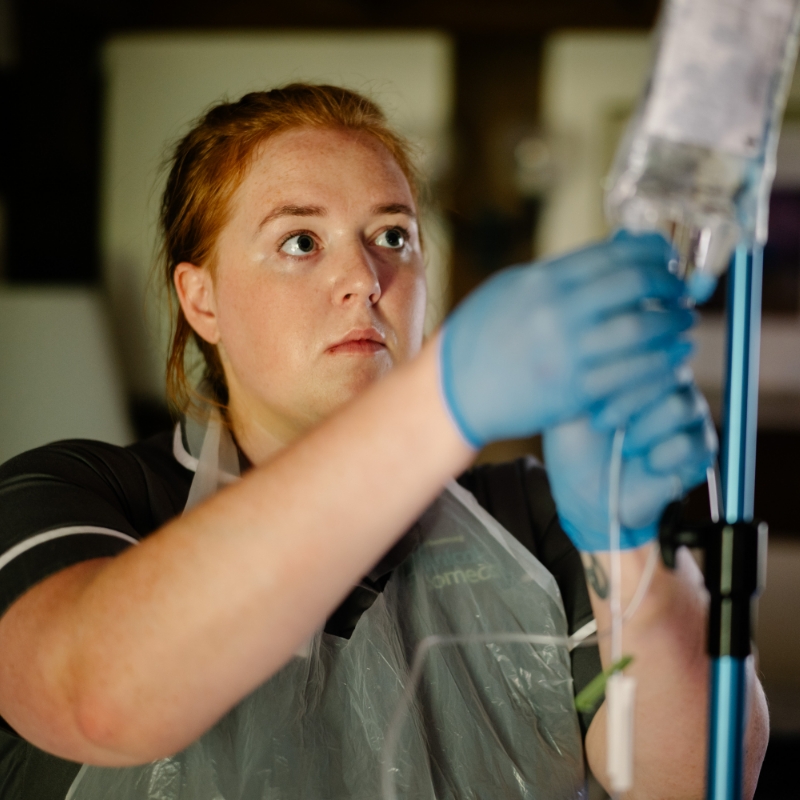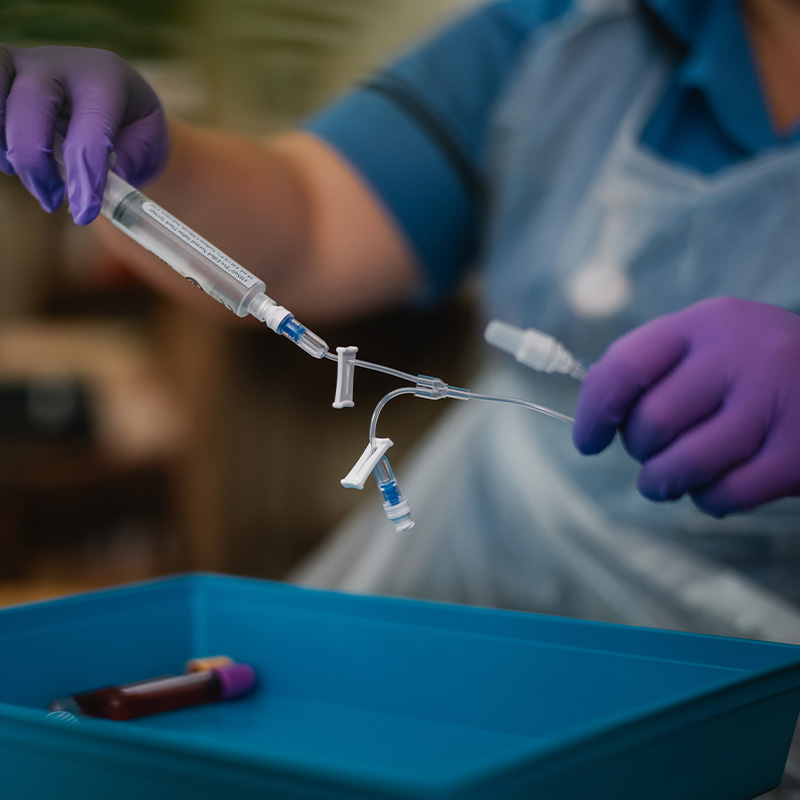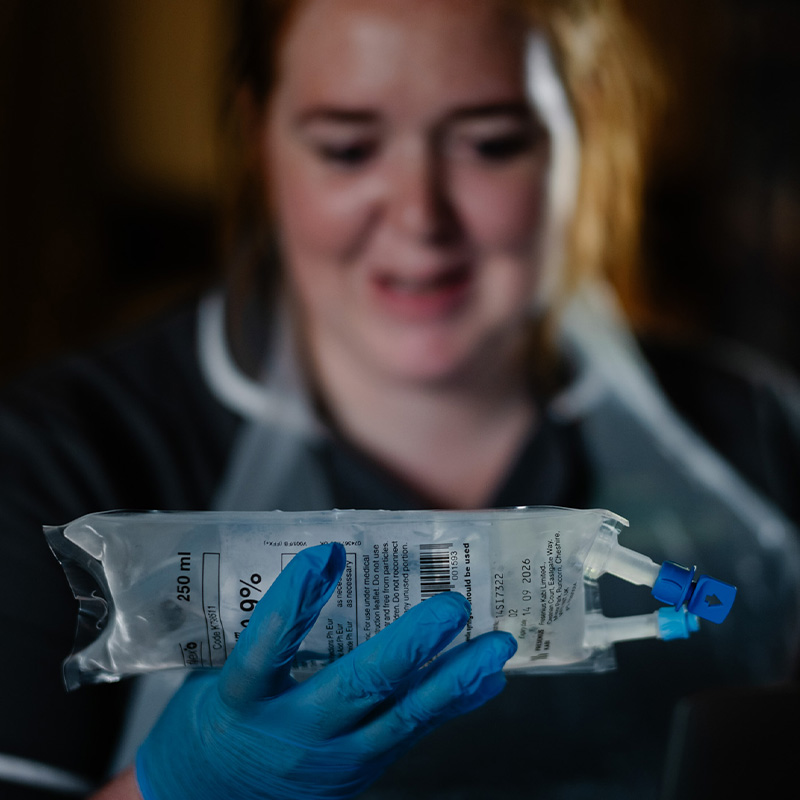Stages of prostate cancer
A prostate cancer diagnosis comes with many questions. You’ll hear terms like “stage” and “grade,” which describe the extent and aggressiveness of the cancer. Understanding what they mean can help you feel more informed and confident about your next steps.
A prostate cancer diagnosis typically involves a combination of exams, blood tests, imaging, and sometimes a biopsy to confirm the presence of cancer. Understanding the stage and grade is a key part of the diagnosis process.
We’re here to help patients understand their options and have a clearer understanding of how prostate cancer is assessed and managed, and where you can turn to for support.
Introduction to prostate cancer
Prostate cancer is a type of cancer that develops in the prostate gland, a small organ located below the bladder in men. One of the most common cancers affecting men, its risk increases with age, making regular check-ups and awareness especially important.
Prostate cancer can present in different forms, ranging from localised prostate cancer—where the cancer is confined to the prostate gland—to more advanced stages like locally advanced prostate cancer and metastatic prostate cancer, where the cancer has spread beyond the prostate to other parts of the body.
Understanding which stage your prostate cancer is in is essential, to assess your best treatment options.

Diagnosis and detection
Early detection makes a difference in treatment outcomes and long-term health. Prostate cancer screening is typically the first step, to find prostate cancer before symptoms appear. The most common screening tools are the digital rectal exam and the prostate-specific antigen (PSA) blood test.
Early detection not only increases the chances of successful treatment but also allows for a wider range of treatment options tailored to your specific situation.
Screening Methods
Prostate cancer screening aims to identify cancer at an early stage, often before any symptoms develop.
The two main screening methods are the digital rectal exam and the PSA blood test. During a digital rectal exam, a healthcare professional examines the prostate gland through the rectum to check for lumps or irregularities. The PSA blood test measures the level of prostate-specific antigen in your blood – higher levels can be a sign of prostate cancer, but they could be other conditions like an enlarged prostate or infection.
How prostate cancer stages are determined
Prostate cancer staging describes how far the cancer has spread in the body. Stage is determined by a combination of test results, imaging tests and prostate biopsy results. The commonly used system for this is the TNM staging system(Tumour, Node, Metastasis).
Tumour (T)
This refers to the size and location of the tumour in the prostate gland or beyond:
- T1: The tumour is too small to be felt during a digital rectal exam or seen on imaging scans.
- T2: The tumour is confined entirely within the prostate.
- T2a: It is in half or less of one lobe of the prostate gland.
- T2b: It is in more than half of one lobe.
- T2c: It is found in both lobes but hasn’t spread beyond the prostate.
- T3: The cancer has broken through the outer capsule of the prostate:
- T3a: Spread through the outer capsule.
- T3b: Spread into the seminal vesicles.
- T4: The cancer has invaded nearby organs, such as the bladder or rectum.
Node (N)
Node staging determines whether cancer cells have spread to nearby lymph nodes:
- N0: No cancer is found in the nearby lymph nodes.
- N1: Cancer found in one or more local lymph nodes.
Metastasis (M)
Metastasis describes whether cancer has spread to other parts of the body::
- M0: The cancer has not spread to other areas.
- M1: The cancer has spread beyond the prostate to distant lymph nodes, bones, or other parts of the body (called metastatic prostate cancer).
- M1a: Spread to distant lymph nodes.
- M1b: Spread to the bones.
- M1c: Spread to other organs, such as the liver or lungs.
Localised, locally advanced and advanced prostate cancer
Prostate cancer falls into one of three categories based on its stage:
- Localised (early): Cancer is contained entirely within the prostate (T1 or T2).
- Locally advanced: Cancer has spread outside the prostate capsule but not to distant parts of the body (T3 or T4 with M0).
- Advanced (metastatic): Cancer has spread to other areas, such as bones or organs (M1).
Understanding the clinical stage helps doctors recommend tailored treatment options.
https://www.cancerresearchuk.org/about-cancer/prostate-cancer/stages/tnm-staging
Diagnostic tools
Your doctor will use a combination of diagnostic tools to confirm the diagnosis and determine the cancer’s stage. These tools include imaging tests, biopsy samples, and lab tests.
Imaging tests, such as MRI or transrectal ultrasound, provide detailed pictures of the prostate and surrounding tissues, helping to pinpoint the location and size of any tumours. A prostate biopsy involves taking small samples of prostate tissue to look for cancer cells under a microscope.
Together, these diagnostic tools give the information needed to accurately stage the cancer and plan the most effective treatment.
Imaging tests
Imaging tests play a crucial role in the diagnosis and staging of prostate cancer. Techniques like transrectal ultrasound, MRI, and CT scans allow doctors to visualize the prostate gland and nearby tissues, helping to assess the size and extent of the tumor. These tests are also used to check if the cancer has spread to other parts of the body, such as lymph nodes or bones, which is especially important for identifying metastatic prostate cancer. The TNM staging system, developed by the American Joint Committee on Cancer, uses information from imaging tests to classify the cancer based on tumor size (T), involvement of nearby lymph nodes (N), and spread to distant parts of the body (M). In addition to imaging, the Gleason score and grade group—determined from biopsy samples—help assess how aggressive the prostate cancer cells are. Risk groups, such as those defined by the Cambridge Prognostic Group, further guide treatment decisions by combining stage, grade, and other factors. By using these advanced diagnostic tools and staging systems, your healthcare team can recommend the best treatment options for your individual situation, whether that means active surveillance, surgery, or other therapies, always considering your overall health and personal preferences.
Prostate cancer grading (Gleason Score and Grade Groups)
While staging describes the tumour’s spread, the grading system for prostate cancer evaluates how abnormal the prostate cells look under a microscope in biopsy samples. This helps predict how aggressive the cancer is and how quickly it might grow.
How the Gleason Score works
The Gleason score is based on the patterns of cancer cells in your prostate biopsy samples. These patterns range from 1 (normal-looking cells) to 5 (very abnormal, aggressive cells). Most prostate cancers involve two Grades (patterns), which are added together to give a Gleason score.
For example:
- Gleason score 3+4=7 means Grade 3 is more common, and Grade 4 is present.
- Gleason score 4+3=7 a greater weight on aggressive Grade 4 cells.
Grade Groups
Doctors simplify the Gleason score into Grade Groups for easier understanding:
- Grade Group 1 (Gleason 6): The cancer is slow-growing and less likely to spread.
- Grade Group 2 (Gleason 3+4=7): Slightly faster but generally still manageable.
- Grade Group 3 (Gleason 4+3=7): A higher proportion of aggressive cancer cells.
- Grade Group 4 (Gleason 8): Indicates more aggressive behaviour.
- Grade Group 5 (Gleason 9–10): Cancer is fast-growing and highly aggressive.
https://www.cancerresearchuk.org/about-cancer/prostate-cancer/stages/grades
How stage and grade affect treatment choices
The stage and grade of your prostate cancer shape your treatment plan. They are considered alongside other factors like age, general health and personal preferences.
Treatment by stage
Localised Prostate Cancer (Stage I or II)
- Treatment options: Active surveillance, surgery to remove the prostate (prostatectomy) or radiotherapy.
Locally Advanced Prostate Cancer (Stage III)
- Treatment options: Surgery or radiotherapy combined with hormone therapy to reduce testosterone that encourages cancer growth.
Advanced Prostate Cancer (Stage IV)
- Treatment options: Hormone therapy, potentially combined with chemotherapy or newer targeted drugs.
Individualised care
Your treatment plan isn’t solely based on staging and grading. Personal factors like age, overall fitness, and your willingness to manage potential side effects also shape decisions.
Understanding what your results mean
Hearing terms like T3b, Grade Group 4, and M0 can feel daunting, but they provide a clinical roadmap for your care. Here’s what to keep in mind:
- Staging tells you where the cancer is and whether it has spread.
- Grading reveals how aggressive the cancer cells are and how likely the cancer is to grow.
Both staging and grading guide your medical team’s approach to your care.

FAQs Prostate cancer staging and grading
Does a higher stage or grade always mean a poor outcome?
Not necessarily. Many men with higher-stage or higher-grade cancer live long and active lives, thanks to modern treatments and ongoing management.
Can early prostate cancer be cured?
Yes, for many men, localised prostate cancer can often be cured with surgery or radiotherapy.
Should I get a second opinion?
If you feel uncertain about your diagnosis or treatment recommendations, a second opinion can reassure you and provide clarity.
Does staging determine survival?
Stage and grade are key factors but not definitive predictors. Your overall health, age, and response to treatment also significantly influence outcomes.
Taking the next steps
Understanding staging and grading helps you make informed choices about your care. With clear information and the right support, you can approach your treatment plan with confidence.
Lloyds Clinical experts are here to help and support you.

We know the benefits of cancer care at home
Our specialist cancer services ensure private medically insured and self-paying patients who want an alternative to hospital can start their treatment faster. We consider all cancer treatments, including those not currently available in hospitals.

Looking for more information?
We’ve worked with thousands of patients, and we know you’ll have a lot of questions.
If you’re ready to talk to us to discuss your options, fill out the form below and we’ll be in touch quickly.
If your enquiry is urgent please call 0345 2636 123 (England and Wales) or 0345 2636 135 (Northern Ireland and Scotland).
Your guide to prostate cancer treatment
A prostate cancer diagnosis can be overwhelming. Rest assured, you’re not alone, and there are many options for managing the condition and tailoring treatment to suit your individual needs.
Our guide is here to help you understand private prostate cancer treatment and the main treatment options available.


